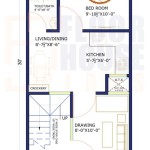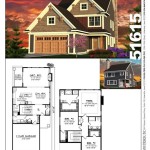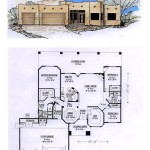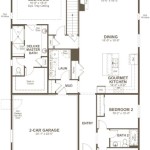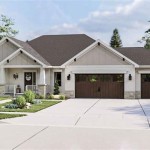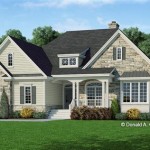Georgian Style Home Floor Plans: A Study in Symmetry and Functionality
Georgian style homes, originating in Britain during the reigns of King George I through IV (1714-1830), represent a distinctive architectural period characterized by symmetry, balance, and classical detailing. These homes, popular in America from the early 18th century onward, often evoke a sense of formality and understated elegance. Understanding Georgian style home floor plans requires recognizing the key principles that underpinned their design, reflecting the social values and practical needs of the era.
Georgian architecture in America evolved from its European counterpart, adapting to local materials and climate. While maintaining the core principles of symmetry and proportion, American Georgian homes, particularly in regions like New England and the South, incorporated vernacular elements and regional variations. This created a diverse, yet recognizable, architectural style that continues to influence residential design today.
A typical Georgian home floor plan emphasizes a balanced and orderly arrangement of rooms. The house is often rectangular or square, with a central entry hall serving as the focal point. Rooms are typically arranged symmetrically on either side of this hall, creating a sense of equilibrium and visual harmony. The size and complexity of the floor plan can vary considerably, ranging from modest two-story homes to grand estates with multiple wings and outbuildings.
Key Point 1: The Importance of Symmetry and Central Hall
Symmetry is the defining characteristic of Georgian architecture, and this principle is meticulously applied to the floor plan. The central hall acts as the organizing element, dividing the house into two equal halves. Rooms on one side mirror the arrangement of rooms on the other, creating a sense of visual balance. This symmetrical arrangement extends to the exterior facade, with windows, doors, and other architectural features carefully placed to maintain a harmonious appearance.
The central hall serves not only as a visual anchor but also as a functional space. It provides access to the main living areas of the house, such as the living room, dining room, and library. The hall often features a grand staircase, which is a prominent architectural element in many Georgian homes. The size and scale of the central hall can vary depending on the overall size of the house, but its importance as a focal point remains consistent.
In larger Georgian homes, the central hall might extend the full depth of the house, connecting the front and back entrances. This creates a clear and direct pathway through the home, enhancing the sense of spaciousness and flow. The hall may also incorporate decorative features such as pilasters, moldings, and arched doorways, further emphasizing its architectural significance.
Smaller Georgian homes might have a more modest central hall, but the principle of symmetry remains intact. Even in these smaller homes, the arrangement of rooms is carefully balanced around a central axis, creating a sense of order and visual appeal. The careful attention to symmetry and proportion is a hallmark of Georgian architecture, regardless of the size or scale of the house.
Key Point 2: Room Placement and Functionality
The placement of rooms in a Georgian home is typically dictated by their function and relationship to each other. The main living areas, such as the living room and dining room, are usually located on the ground floor, flanking the central hall. These rooms are designed for entertaining guests and formal gatherings. The kitchen, often considered a service area, may be located at the rear of the house or in a separate wing.
Upstairs, the bedrooms are typically arranged in a similar symmetrical pattern, with the master bedroom often located above the living room. The bedrooms are designed for privacy and relaxation, and they may feature en-suite bathrooms or dressing rooms. The upper floor may also include additional living spaces, such as a study or a sitting room.
The placement of service areas, such as the kitchen and laundry room, often reflects the social norms of the era. In larger Georgian homes, these areas may be located in a separate wing or outbuilding, to keep them separate from the main living areas. This arrangement allows for a more formal and elegant atmosphere in the primary entertaining spaces.
The size and layout of individual rooms can vary depending on the specific design of the house. However, the overall principle of symmetry and balance remains consistent. Rooms are typically rectangular or square in shape, with high ceilings and large windows. This creates a sense of spaciousness and allows for ample natural light.
Fireplaces are often a prominent feature in Georgian homes, and they are typically located in the main living areas and bedrooms. Fireplaces provide a source of heat and also serve as a focal point in the room. They are often embellished with decorative mantels and surrounds, adding to the overall elegance of the space.
Key Point 3: Detailing and Architectural Elements
Georgian style homes are characterized by distinctive architectural details that contribute to their overall elegance and sophistication. These details include elements such as symmetrical window placement, dentil moldings, pilasters, and pediments. These features are carefully incorporated into the design to enhance the visual appeal of the house and reinforce the sense of classical order.
Windows are a prominent feature of Georgian architecture, and they are typically arranged in a symmetrical pattern on the facade of the house. Windows are often multi-paned and may feature decorative shutters. The placement and size of the windows are carefully considered to maximize natural light and create a balanced appearance.
Doorways are another important architectural element in Georgian homes. The main entrance is often emphasized with a decorative pediment, pilasters, and a fanlight window above the door. This creates a grand and welcoming entrance that reflects the formality of the style.
Interior detailing in Georgian homes often includes elements such as crown moldings, wainscoting, and elaborate fireplace mantels. These features add to the overall elegance and sophistication of the interior spaces. The use of high-quality materials and craftsmanship is also a hallmark of Georgian architecture.
The roof of a Georgian home is typically hipped or gabled, with a moderate slope. The roof may feature dormer windows, which provide additional light and ventilation to the upper floor. The roof is often clad in slate or wood shingles, adding to the overall aesthetic appeal of the house.
The exterior of a Georgian home is often clad in brick or clapboard siding. The color palette is typically restrained, with neutral colors such as white, cream, and gray being the most common. The landscaping is also carefully considered, with symmetrical plantings and manicured lawns adding to the overall formality of the property.
Modern interpretations of Georgian style floor plans often maintain the core principles of symmetry and balance, while incorporating contemporary amenities and features. These modern adaptations may include open floor plans, larger kitchens, and more luxurious bathrooms. However, the overall sense of formality and elegance remains a defining characteristic of the style.
The enduring appeal of Georgian architecture stems from its timeless elegance and sense of order. The symmetrical floor plans and classical detailing create a sense of harmony and balance that is both visually appealing and functionally efficient. Whether in its original form or in a modern adaptation, the Georgian style continues to be a popular choice for homeowners who appreciate its timeless beauty and sophisticated design.
Understanding the principles of Georgian style home floor plans provides valuable insights into the architectural history and design philosophy of this iconic style. By recognizing the importance of symmetry, room placement, and architectural detailing, one can appreciate the enduring appeal of Georgian architecture and its continuing influence on residential design.

Vintage Home Plans Country House Floor Plan

6 Bedrm 6858 Sq Ft Georgian House Plan 196 1023

Georgian House Plans Plan Detail The Denah Lantai Rumah

Chicago Vernacular Architecture

Georgian Style Cottage William H Phillips Southern Living House Plans Storybook Plan Large

Georgian House Plan The Hanover 10 Beautiful Home

Georgian Home Decor Style Guide What Is

Classic Georgian Colonial House Plan For Growing Families

Georgian Style Home House Plans Mansion Floor Plan Architectural

Charleston House Plan Georgian Style Home Floor Plans Mediterranean How To

